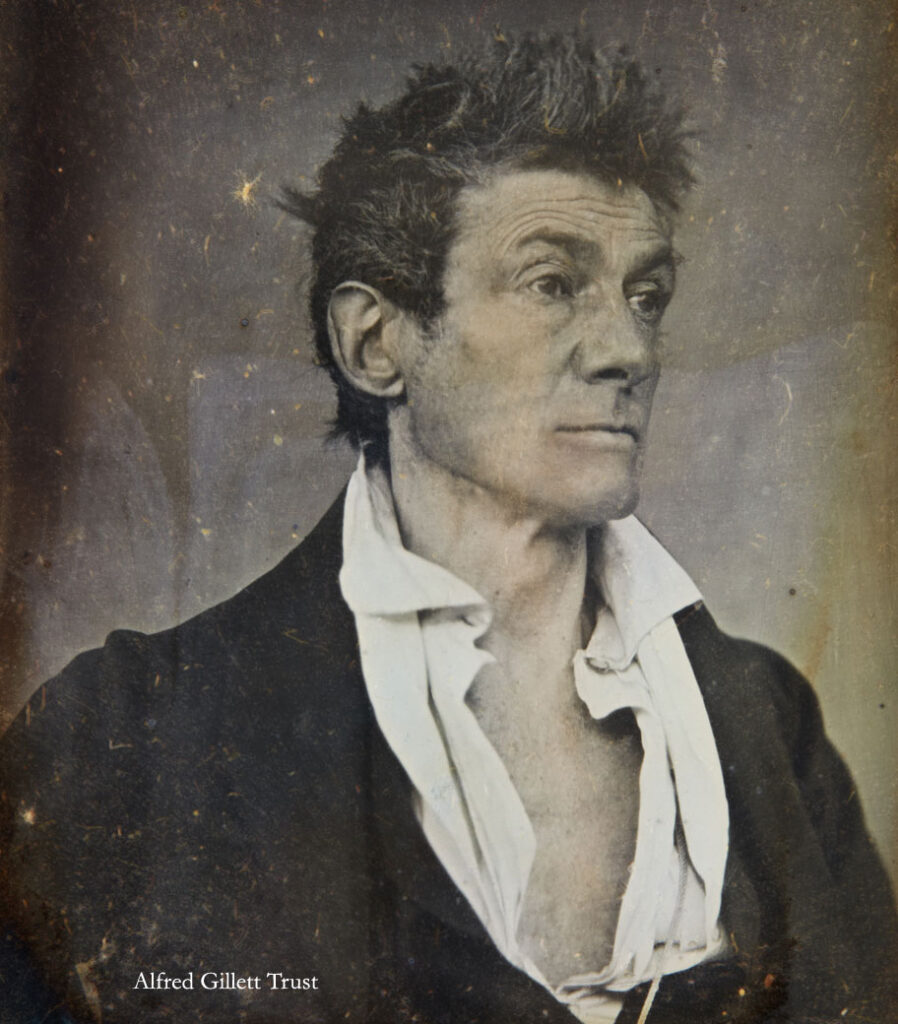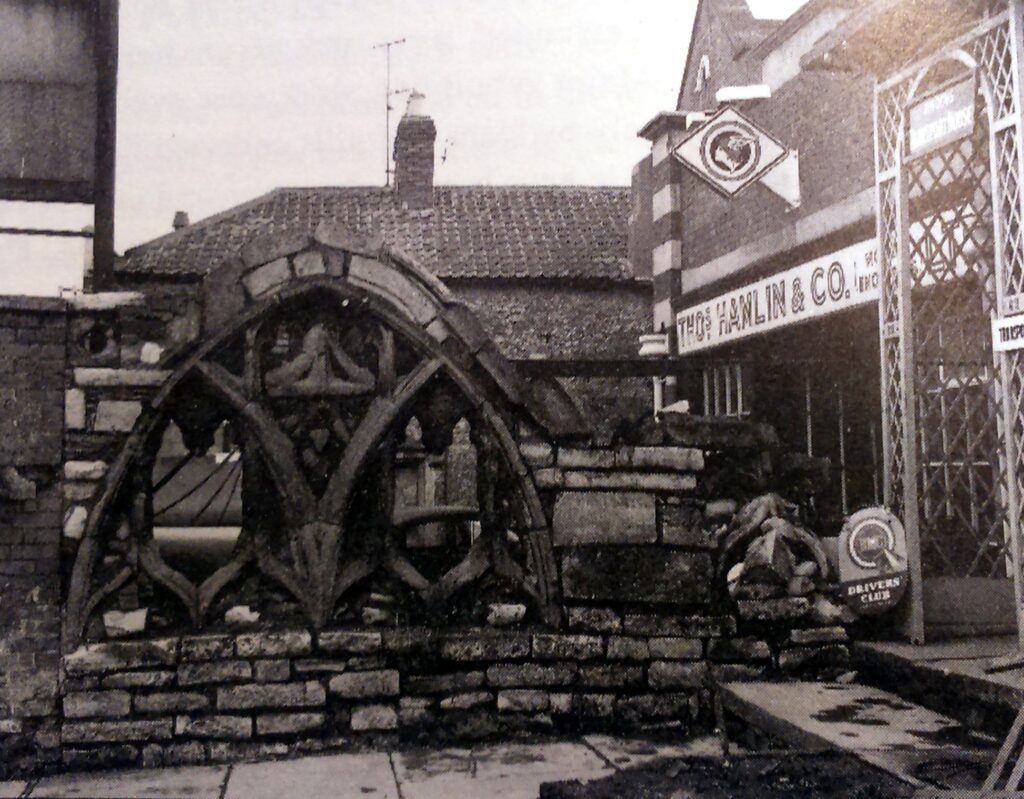
John Clark (1785-1853) is possibly the most remarkable man in the history of Bridgwater: an inventor, a poet, historian and writer. He was born 21 November 1785 at Greinton, the eldest son of Thomas Clark and Mary Metford and was a brother of Thomas Clark, the botanist and builder of Halesleigh Tower. He was initially a grocer and later a printer by profession. He was one of a number of members of Bridgwater’s Quaker community.
He was educated at Compton School, near Sherborne, and was apprenticed to Joseph Metford of Glastonbury, shop-keeper and stocking manufacturer. He moved to Bridgwater in 1809 and set himself up as a grocer, although he seems to have changed profession several times over his life. Brother Thomas seems to have taken over the grocery business.
He is most notable as an inventor. One of his more lasting achievements was a method of making cloth waterproof. In his patent (3718 of 1813), he was described as an upholsterer. He is reputed to have sold it to Charles Macintosh for £40. He also devised a fire-escape, air beds, an economising grate, and a printing device for the blind to write messages.
Isabella Metford, John’s niece, would later recall how:
When we as girls first visited Burnham [on Sea] Lighthouse in the forties (1840s), the superintendent – Mr Campbell, a highly intelligent man – showed us part of the lighting machinery, which he said was invented by Mr John Clark of Bridgwater, who had taken a great scientific interest in the whole construction
She also mentions how John had told her of the ruins of Idstock Priory near Cannington, and that he was a good friend of Charles Chubb, a relation of John Chubb. She also mentions:
It was my uncle John Clark who requested the name of Monmouth Street – of which he himself occupied the east house of the long row on the eastern side facing St John’s church – till his death in 1852. In the little front garden still stands the top part of a tracery window from the ruins of Glastonbury Abbey which he thus preserved.
These ruins have been assumed elsewhere to have been part of St John’s Hospital, although Isabella’s comment here indicates otherwise. John also wrote The Avalonian Guide to the Town of Glastonbury and its environs, which was published in six editions between 1810 and 1839, which gives some scope for him having salvaged some rubble.

Another niece, Margaret Thompson Sturge also wrote about John:
Occasionally a very curious man, as he seemed to me, would come to Meeting [at the Quaker Meeting House]. He looked like a big boy, for he wore a short jacket, and very short trousers, and his shirt was so open in front, that his skin was visible; round his neck was a light blue (or red) necktie. He was the eccentric and clever John Clark, Father’s uncle, and Father used to take us to call upon him at his house in Eastover, close to the large white turnpike gates. He would show us the Latin verse-making machine which he had invented, and let me put a penny and see the couplet coming out… Uncle J. Clark really invented the rain-proof material for water-proof coats, but he sold the patent to a Mr. Macintosh for £40, and so lost the honour and profit of the discovery. Uncle J. Clark was however never a practical man, and like many another genius, lacked the ability to bring to perfection the many original ideas which filled his brain. He died in 1853.
Most remarkable of all, mentioned by Sturge above, Clark spent 13 years of his life building a machine for turning out Latin hexameter verse, which he called the ‘Eureka’ machine. It was exhibited in the Egyptian Hall in London in 1843, and survives at the Alfred Gillett Trust in Street. As well as composing the poetry, the machine would also play music and projected images from a kaleidoscope on top. More can be read about the Eureka here and here.
Clark had a gift of writing poetry and wrote a 32 page continuation of Byron’s Don Juan: Canto xvii. It was printed by John Coate of Huish Episcopi and Langport; and William Cass of Bridgwater in 1827 Length.
Clark died 23 May 1853.
Joseph Smith’s A Descriptive Catalogue of Friends’ Books: Or Books Written by Members of the Society of Friends (1863) summaried John’s career (edited slightly):
CLARK, John, son of Thomas Clark, was born at Grienton, Somerset, November 21st, 1785, and received his education at Compton School, under Thomas Thompson. He early exhibited a good deal of inventive genius, and a taste for philosophical and antiquarian pursuits: and, although engaged for many years in business at Bridgwater, his mind was always much occupied with inventions designed to promote the welfare of mankind. Amongst other original ideas he suggested a Fire-escape, and a Grate for economizing the consumption of fuel; and he even projected an Electric Telegraph long before the establishment of Railways. He also took out a Patent for the construction of Air Beds and Cushions, by the use of a solution of India Rubber; and this Patent he disposed of to the famous Mackintosh. Much attention was also devoted by him to devising an apparatus, worked by keys like a Piano, by means of which the blind could print messages or letters.
Like many other inventors, he reaped but little pecuniary reward. The versatility of his mind was also exemplified by the construction of a machine that actually composed Latin verses. In his ideas on political economy and other important subjects, he was much in advance of his day. His kindliness of disposition led him to devise schemes for alleviating the sufferings of the brute creation. The preservation of many of the relics of Glastonbury Abbey was due to his watchfulness and care.
[He wrote the following books:]
The Avalonian Guide to the Town of Glastonbury and its Environs. Glastonbury: Printed for and sold by J. Wakefield, at the White Mart Inn; by Mary Bryan, Bristol. The final 10th edition was revised by his brother Thomas. 8vo. 1865.
Observations on the Construction of Elastic Beds, &c. No date.
Tales of the Convent of St. Clair.
Quit the dim path, if search of cloudless light
Hath led thy wanderings back to ages past;
Frail are the frozen flowers, and thinly cast
O’er the cold regions of monastic night.
Yet in their caverns’ dark recesses, dwells
The long lost spirit of forgotten times;
Whose voice, prophetic, reached to distant climes,
And rul’d the nations from his witched cells.
That voice is hush’d but still in fancy’s ear,
Its first unmeasured melodies resound;
Blending with terrors wild, and legends drear,
The charmed minstrelsy of mystic sound
That rous’d, embodied to the eye of fear,
Th’ unearthly ‘habitants of faery ground.
Certe solot eccleaiarium cultus augustlor quaslibot incultaa montos ad oraodum illicere, quamllbet cervicositatera ad supplicandum et inflectero. Eagle Press: Printed by J. Clark, Castle Printing Office, Bridgwater; Published by O. Offer, Postern-row, Tower-hill, London Large 4to. 1823. 8£
Defence of a Sermon, entitled, ” The Necessity of Philosophy to the Divine.”, [anon.] 8vo. 1826.
Don Juan. Canto XVII. London: Published by the Editor; Printed by John Coates, Huish Episcopi-Langport and William Cass, Bridgwater. 8mo. 1827.
Notes and Comments designed to Elucidate a Sermon by John Matthews, M.A., Rector of Kilve and Kingston, Somerset, The Churchman dissuaded from becoming a member of the Bible Society, Ac.,” by a Graduate of the Church Militant School. 1st and 2nd edition. Aubrey Typ., Bridgwater. 1835.
A Brief Address to the Members of the Monthly Meeting of Friends in the Western Division of the County of Somerset, (subjoined to which is an Abstract of an Address, entitled, “Quakerism.”) .. Folio. No Printer’s name or place. 1838.
The General History and description of a machine for composing Hexameter Latin Verses. Designed and Constructed by John Clark, Bridgwater. Printed by Frederic Wood, Bridgwater. … 12mo. 1848.
The Wonders of the Window Tax. Printed and published by John Clark. … … 8vo. 1848.
He died May 23rd, 1853, aged 68 years, and was buried in the Friends’ burying-ground at Bridgwater.
Sources:
R. Clark, Somerset Anthology, 1975, pp 96-102, 111-5
Edward H. Milligan, Biographical Dictionary of British Quakers in Commerce and Industry, 1775-1920,,2007, p 106
A P Woolrich 26 January 2011, additions MKP 2020 & 2022, alteration Stephanie Smith.
